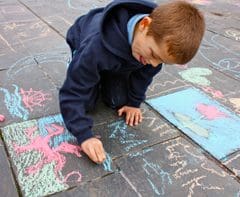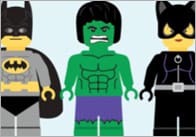Helping Children with Learning Difficulties by Finding the ‘Right Key’

I watched with interest the programme about ABA on BBC’s Channel 4 on November 6th. My daughter trained as an ABA tutor and so I knew a bit about it already. The part which interested me in particular was where they showed a very young boy who wouldn’t eat anything except for a handful of various similar foods. He had been diagnosed as having autism.
At home his behaviour was very challenging for his Mother. When she tried to get him to eat something different there were huge tantrums and he would gag or be sick. This happened again and again and was very wearing on his Mother. She then decided to enrol him in an ABA school to see if they could help with his behaviour. When the school felt that it was the right moment, they began challenging his behaviour re ‘food’ and eating different foods. They started with small steps. At first they managed to get him to be calm if a plate of food, which he didn’t want to eat, was put on the table at which he sat. At first this caused a major upset and tantrums. ABA works on a system of rewarding the child by using positive reinforcement when the child shows the desired behaviour. Slowly his attitude began to change. Within a period of three weeks he was enjoying a much wider range of food. His Mother never thought that she would see him enjoy eating other foods. Then to her great joy she was able to take him out for meals; something else that she never thought would be possible.
The question that the programme raised was whether or not we should put children through such dramatic training to help them change to a more ‘normal’ behaviour and make it more acceptable to people around them. Thinking about this, I believe that this child gained so much. This change of attitude will help him through his entire life and, therefore, the difficulties he experienced on the way will have been totally worthwhile. However, I believe ABA is not necessarily suitable for every child.
I am SpLD tutor and recently I witnessed a staggering improvement in a child who has been diagnosed as having severe dyslexia. When I first taught Carl (I have changed his name to protect his identity) he worked hard but I sensed that he had built up ‘a brick wall’ every time we did any kind of phonic work and not surprisingly I saw very little progress. One day I was told that he was going to do a course set up by Ronald D. Davis. It sets out step by step techniques, using visualisation and sensory learning (for more information read The Gift of Dyslexia by Ronald D Davis). I was asked whether I would be happy to help Carl to learn in this way. I agreed as I thought it was worth a try, as teaching him phonics was clearly not really helping. Over several weeks the change in Carl was amazing. He wanted to do the work he was set, he relaxed and his sense of humour (which he had largely lost because of stress) came back. The channels for learning were reopened!! It was incredible to see this change in him!! He has now started at Secondary school and is holding his own. He still comes to me once a week and wants to do his work!!!
Finding the ‘right key’ to help a child with severe learning difficulties to change challenging behaviour or to open the channels to constructive learning may well be difficult. If you as a parent feel that something is not working for your child, do try and find another way of helping them, but don’t give up! As human beings we are all different so that it makes sense that different techniques will help different children. Finding the ‘right key’ for your child can be a challenge but when you’ve found it the rewards can be amazing and very worth while! The right key can certainly unlock the door to learning and fulfilling achievements.
Popular Teaching Resources
Stay Up To Date
Sign up for our newsletter and we’ll let you know when we create new early years resources.





